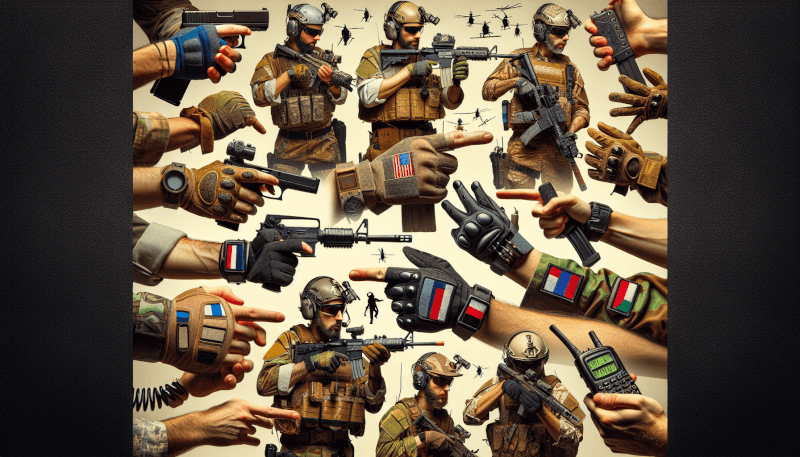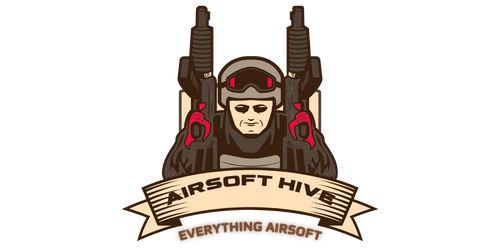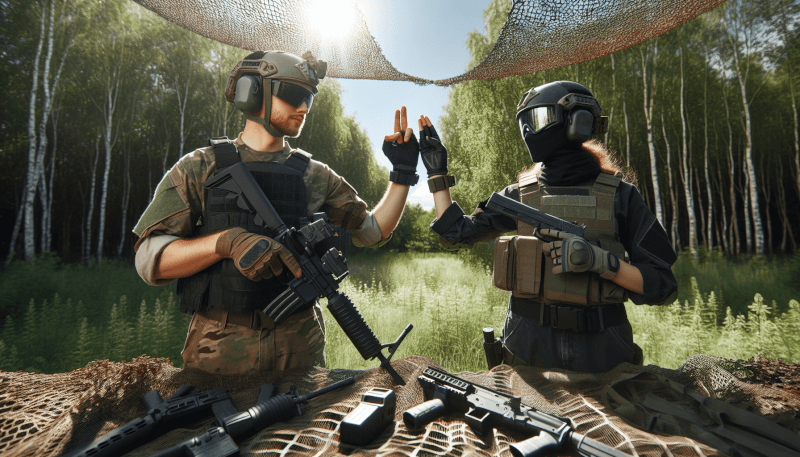Are you ready to step up your game in airsoft? Communication is key on the battlefield, and mastering the protocols and codes used in airsoft can give you a competitive edge. This in-depth guide will take you through the essentials of airsoft communication, from understanding basic terminology to deciphering complex codes. Whether you’re a beginner looking to enhance your tactical skills or a seasoned player wanting to fine-tune your strategy, this guide is your ultimate companion in navigating the world of airsoft communication. Get ready to communicate like a pro and dominate the field!

Airsoft Communication Protocols and Codes
Airsoft is a thrilling and tactical sport that requires effective communication among team members. Good communication is essential to ensure coordination, safety, and success on the battlefield. In order to achieve this, airsoft players have developed various communication protocols and codes to facilitate smooth and efficient information exchange. In this in-depth guide, we will explore the importance of communication in airsoft, the different types of communication protocols utilized, the benefits of using these protocols, as well as commonly used communication codes in airsoft.
Understanding the Importance of Communication in Airsoft
Overview of Communication in Airsoft
Communication lies at the heart of any successful airsoft operation. It serves as the backbone for strategic planning, effective coordination, and the execution of tactical maneuvers. In the heat of battle, being able to relay critical information quickly and accurately can mean the difference between victory and defeat.
Importance of Effective Communication in Airsoft
Effective communication in airsoft is paramount for several reasons. Firstly, it allows for better situational awareness. By keeping the lines of communication open, team members can share vital information about enemy positions, movements, and potential threats. This shared knowledge enhances the overall awareness of the team, enabling them to devise effective strategies and respond accordingly.
Secondly, effective communication enhances team coordination. By providing clear instructions and relaying important updates, team members can work together seamlessly to achieve their objectives. Whether it’s coordinating an assault, setting up an ambush, or defending a position, efficient communication ensures that everyone is on the same page, minimizing confusion and maximizing the team’s efficiency.
Enhancing Team Coordination through Communication
Airsoft teams that prioritize effective communication are better equipped to coordinate their actions on the battlefield. This coordination is achieved through the use of established communication protocols, which provide structure and standardization to the team’s communication efforts. These protocols ensure that all team members are speaking the same language, both literally and figuratively, enabling smooth and efficient coordination.

Types of Communication Protocols in Airsoft
Voice-Based Communication Protocols
Voice-based communication protocols are the most common and straightforward method of relaying information in airsoft. It involves using verbal commands and instructions to communicate with fellow team members. This can be as simple as shouting directions or using established call signs and code words to convey specific messages.
Establishing a set of standardized call signs and code words is crucial for effective voice-based communication. Call signs are unique identifiers given to each team member, allowing for quick identification during intense situations. Code words, on the other hand, are specific words or phrases that have pre-determined meanings within the team. For example, “tango down” could mean that an enemy has been neutralized.
Hand Signals and Visual Communication Protocols
In situations where verbal communication may compromise stealth or visibility, hand signals and visual communication protocols are employed. These non-verbal communication methods are especially effective in close-quarters combat or when operating in low-light conditions.
Hand signals involve using specific gestures or movements to convey messages. For example, a closed fist raised above the head could mean “halt,” while a sweeping motion with the hand could mean “move forward.” These gestures are universally understood within the team, providing a silent and efficient means of communication.
Visual communication protocols, such as colored flags or patches, are also used to identify friendly units or convey specific messages. Different colors or symbols can represent different information, such as the team’s position, their intentions, or the presence of friendly forces.
Radio Communication Protocols
Radio communication protocols offer a more advanced and versatile method of communication in airsoft. They allow for real-time communication between team members, regardless of distance or visibility. Radios enable the transmission of voice messages, which can be clearer and less prone to misinterpretation than shouting or using hand signals.
When using radio communication, it is important to establish and adhere to specific protocols. These may include using specific radio frequencies or channels, employing proper radio etiquette, and utilizing concise and clear messages. Radio protocols ensure that the communication remains organized and that critical information is not lost or misunderstood.

Benefits of Using Communication Protocols in Airsoft
Enhanced Tactical Operations
By utilizing communication protocols, airsoft teams can execute tactical operations with greater precision and effectiveness. Clear and timely communication allows team members to coordinate their movements, share situational updates, and synchronize their actions. This enhances the team’s ability to execute complex maneuvers, such as flanking maneuvers, suppressing fire, or coordinated assaults.
Improved Safety and Situational Awareness
Effective communication protocols contribute to improved safety on the airsoft field. By sharing information about potential threats or hazards, team members can take the necessary precautions to avoid accidents or injuries. Additionally, enhanced situational awareness through accurate and timely communication allows team members to respond proactively to changing circumstances and make informed decisions that prioritize safety.
Efficient Team Collaboration and Decision-Making
Communication protocols facilitate efficient team collaboration and decision-making processes. By establishing a framework for communication, team members can quickly and effectively exchange ideas, discuss strategies, and make collective decisions. This ensures that everyone’s input is heard and considered, fostering a sense of teamwork and cohesion within the group.

Commonly Used Communication Codes in Airsoft
Introduction to Communication Codes
Communication codes in airsoft serve various purposes, including ensuring secrecy, encrypting sensitive information, and providing shorthand for frequently used phrases. These codes are designed to improve communication efficiency and provide an additional layer of tactical advantage.
Common Code Words and Phrases in Airsoft
There are a plethora of code words and phrases commonly used in airsoft to convey specific messages quickly and covertly. For example, “Bingo Fuel” means that a player’s ammunition supply is running low, “Bug Out” indicates the need for an immediate retreat, and “Check Your Six” reminds a team member to check behind them for potential threats. These code words are learned and understood by the team members, allowing for rapid communication without alerting the enemy.
Secrecy and Encryptions in Airsoft Communication Codes
In certain airsoft scenarios, secrecy becomes vital. Communication codes can provide encryption methods to ensure that sensitive information remains confidential. These encryption methods may involve substituting letters or numbers with specific symbols or using pre-determined algorithms to decode messages. By employing secrecy and encryption in communication codes, airsoft teams can maintain a tactical advantage and prevent their plans from being intercepted or understood by the opposition.
In conclusion, effective communication protocols and codes are crucial in the world of airsoft. They enable teams to operate with enhanced coordination, safety, and efficiency. By utilizing voice-based communication, hand signals and visual cues, and radio communication protocols, airsoft players can effectively relay information and execute complex maneuvers. The benefits of using communication protocols include improved tactical operations, enhanced situational awareness, and efficient team collaboration. Additionally, commonly used communication codes add another layer of efficiency and secrecy to communication efforts. So, remember to prioritize communication in airsoft, and you’ll be well on your way to victory on the battlefield.



